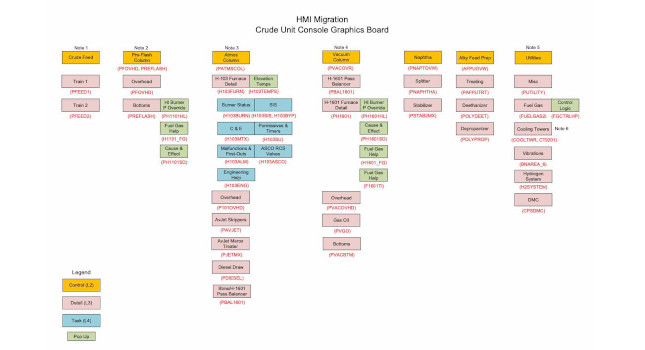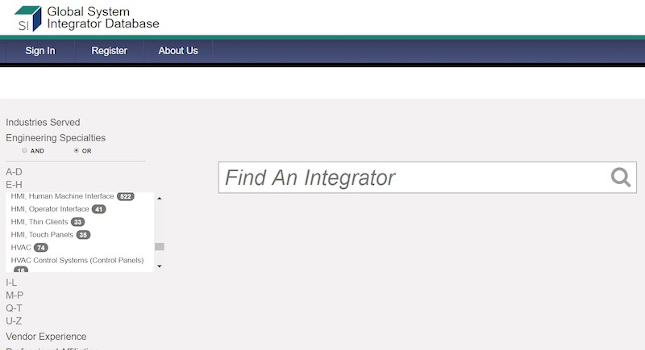Once upon a time, a company needed to learn more about the reasons one of its manufacturing cells was under-performing. “This customer assigned individuals to review the data, manage the system and make recommendations for improvement.
Once upon a time, a company needed to learn more about the reasons one of its manufacturing cells was under-performing.
“This customer assigned individuals to review the data, manage the system and make recommendations for improvement. Review of the data by GE Fanuc over a 90-day period revealed that the system was never accessed by anyone assigned and no actions were taken,” said Mark Cox of GE Fanuc. “During a data review with the customer, GE Fanuc identified $1.2 million worth of current actionable improvement opportunities.”
And this is where the fairy tale turns into a horror story. “A report was generated outlining recommendations and presented to management. No actions were taken by any individual or department,” Cox said. “Reason given: ‘We are simply too busy trying to meet production demands to improve.’”
Leaving $1.2 million of process improvements on the table is the kind of stories Cox hears far too often. The business of collecting data, which companies such as GE Fanuc have gotten good at, is only half of the equation in manufacturing. Acting on that data seems like it is the logical next step, but many manufacturers such as the one cited above simply never follow through.
“Shortly after a system is installed and reporting data, many companies tend to go into ‘data shock’ if the results are very poor,” said Cox. “They find it difficult to believe that their system performance is actually much less efficient than they had originally understood.”
Once that shock is over comes the tough part: engaging the organization in change. “The first mistake I see many companies making is in not making performance information available to everyone in the organization,” said Cox. “That seems to be the most difficult thing for companies to do. Most are so embarrassed by their current OEE values that they don’t want anyone to know.
“My recommendation, quite honestly, is to buy the biggest monitors you can find and display your OEE information everywhere,” he added. “Displaying this information will have the single biggest impact in improving your company’s efficiency because everyone will feel they have a stake in making those improvements.”
The availability of data to measure plant-floor performance is everywhere, said Mike Wendell, VP of manufacturing for SAP. “You can look at operational data, quality data, compliance data. Data is so pervasive, so easy to access now. Our customers are telling us they want more specific data.”
He said making that data transparent and available throughout the organization is crucial to giving the enterprise a chance to improve. “A company was interested in product data and feeding it to their quality manager, but other folks might benefit as well. If you solve problems for a specific group, it may have a wider application, and it can become more of a continuous improvement process.”
It’s a change for data management companies as well. Installing sensors and gauges and making them available through a Web-based interface is a great first step. Providing a consultant’s eyes and ears is becoming as important as the software itself. “At present one of the critical issues is change management. We don’t do enough of that,” said Wendell. “Our customers need guidance on how to do this, and it’s helpful for it to be from an outside source. We see firms aggressively going after that space. They’re looking at real manufacturing excellence, not just stringing together the underpinnings of a system. They’re facilitating progress. It’s more cultural than technical.
“It’s the art of the possible,” Wendell added.
Deal with data reality
Finding what’s possible, of course, begins with finding what’s real. “I recently worked with a company who was posting OEE reports throughout their plant with OEE values in the 90% to 110% range — beyond world-class OEE levels,” said Cox. “Our system was reporting their OEE to be in the 25% to 30% range. After numerous trips to verify the accuracy of the information collected, they agreed that their system was reporting accurately.
“Once they got beyond the initial shock, and the accompanying fear of reporting this new information to their management,” Cox said, “they agreed that the new system would help them make improvements that would allow them to actually achieve the performance they thought they had been hitting already.”
That leads to one of the biggest lessons of data management — making changes based on the data. “Once buy-in has taken place among the stakeholders and everyone is on the same page about taking corrective action, real change can happen,” said Cox.
Wendell said the most important piece of data management is not found in a sensor. “To make information more efficient, it takes people. To bring a lot of value, it often takes people from outside the four walls of the plant,” he said. “You’ve got to share data up and down the enterprise, or do plant-to-plant comparisons for the VP of operations.”
And while there may not be $1.2 million in cost savings lying around your plant, it could be found in incremental improvements. “Often minute improvements are adding up over multiple lines or multiple plants,” said Wendell. “Many of the solutions SAP has been involved with are in creating visibility so that the incremental improvements can be found. The bottom line benefits are staggering. It’s not SAP finding these. The customer, with access to information, is able to make better, more informed decisions. Over 50-100 plants, the savings can be staggering.”
And Cox and Wendell agree it is critical that the data be placed in the hands of the key leaders in the manufacturing process. “Our plant customers are asking, ‘if the CFO can have access to the financial data in real time to make decisions and the sales and marketing people can have access to their data in real time to make decisions, why can’t we have the same level of access to data?’ It’s a natural progression,” said Wendell.
Cough up the cash
Access is one thing. That’s warm and fuzzy and easier to distribute than the funds needed to implement the change identified by the data. “Another mistake is made in not assigning resources to monitor the system and identify opportunities for improvement,” said Cox. “Typically, a 5% improvement in OEE is worth an incredible amount of money to a company. The return on investment if you do nothing with the data? Zero. These systems should be considered business-critical systems and appropriate action should be taken based on that.”
“The first part is just technology,” said Wendell. “We’ve got an XMII system capable of connective data from the enterprise to PLCs. We’ve got the technology platform connected to all kinds of different devices. That’s the simple part. The hard part — but the fun part — is what you can do once we’re able to pull the data together.”
It also means putting the right data in the right spots. “The key is minimizing the amount of ‘weeding’ users have to do to get through the tons of information available. Different individuals and departments will want access to different information. Those leading the data collection projects should give a lot of consideration as to how they want to provide information to their internal customers. If users have to weed through a ton of information to get to what’s important to them, they won’t use it.”
An example is GE Fanuc’s Proficy Machine Tool Efficiency solution. “It can display information in so many different ways that the only real limitation is one’s imagination,” said Cox. “Almost all customers will want something different than the standard reports offer. It will take some time and effort to determine what works best for each group of uses.”
That’s why industry leaders in data gathering and display also are adding data management tips and consultancy to help customers hack their way through the jungle of data.
Compliance and competency
In the days of Sarbanes-Oxley, data is a vital tool to demonstrate compliance. But as Wendell notes, that’s just one definition. “Compliance means a lot of different things. It’s not just regulatory compliance,” he said. “It’s compliance to company standards, to customer needs or to regulatory issues. It’s going to lead to more visibility and control in a compliant fashion. It’s usually talked about with those industries facing regulatory compliance, but it really is almost any industry, and it can have a significant bottom-line impact.”
Data management is about both parts of the phrase. Getting the data, it turns out, is the easy part. “It really doesn’t matter how the data is displayed,” Cox said, “as long as it can be accessed quickly, provides meaningful information and the users are finding opportunities for improvement.”
And so this fairy tale has a happy ending, Cox related this story: “We had a customer achieve an 18% improvement in OEE in the first year; their goal was 5%. This customer provided for a full time individual to monitor the assets, coordinate maintenance and operations personnel in real time and document opportunities for improvement to the various department managers weekly.
“He also provides OEE trends to the plant manager at his weekly continuous improvement meeting along with cost and ROI information. The vast majority of improvement made required no capital investment,” he added. “Their 2008 goals call for an additional 10% OEE increase, which equates to millions of dollars.”
They not only lived happily ever after, but a lot richer as well.
Wendell, Cox to present data seminar at Summit
Mark Cox of GE Fanuc and Mike Wendell of SAP will present a session on effective data management at the Plant Engineering Manufacturing Summit, March 31 and April 1 at the Hotel Sofitel in Chicago. Their presentation will dig deeper into the possibilities and pitfalls around data collection on the plant floor and offer practical ideas on how to improve data management.
Registration for the Manufacturing Summit is now open. Go to www.PlantEngineering.com and click on the Manufacturing Summit logo to register.



